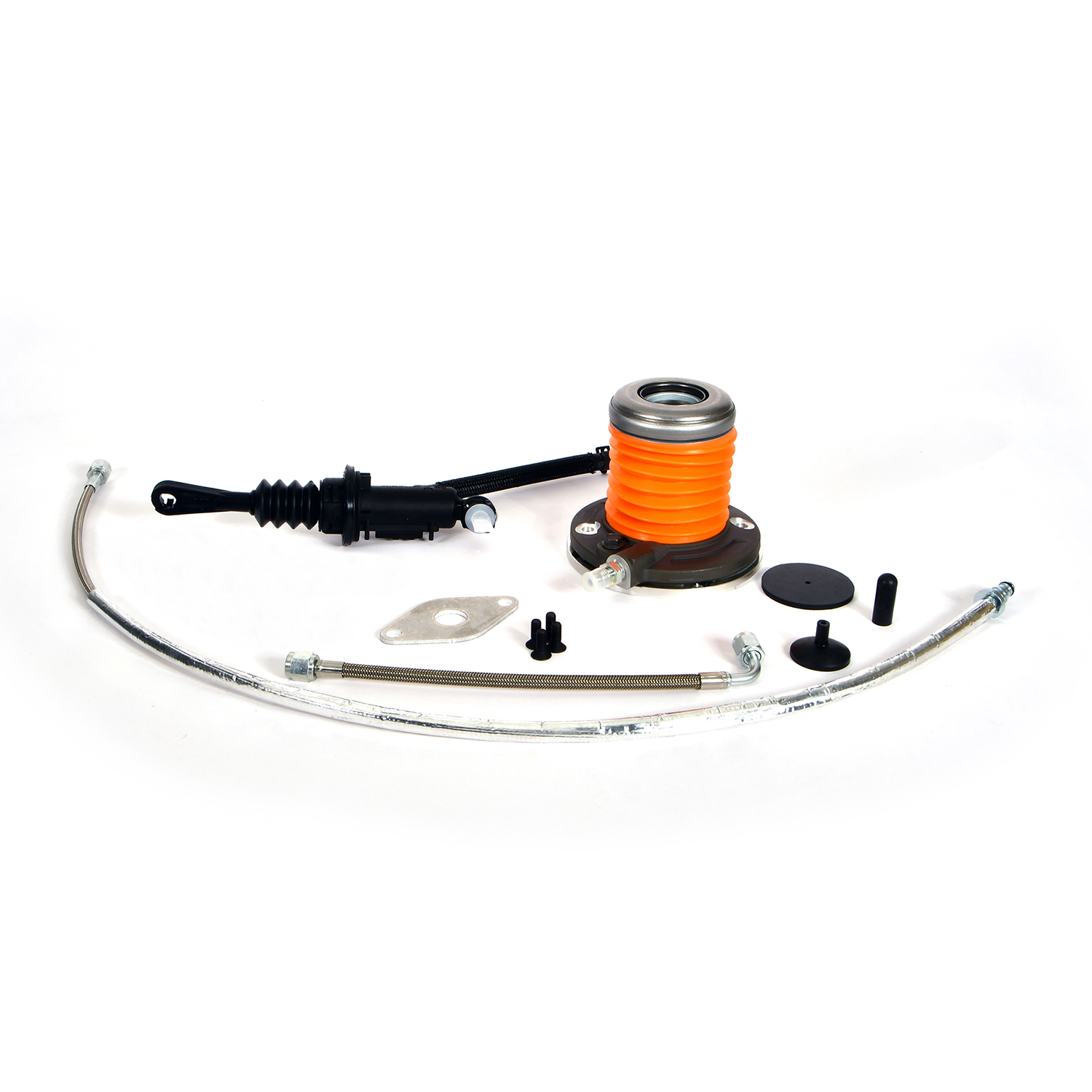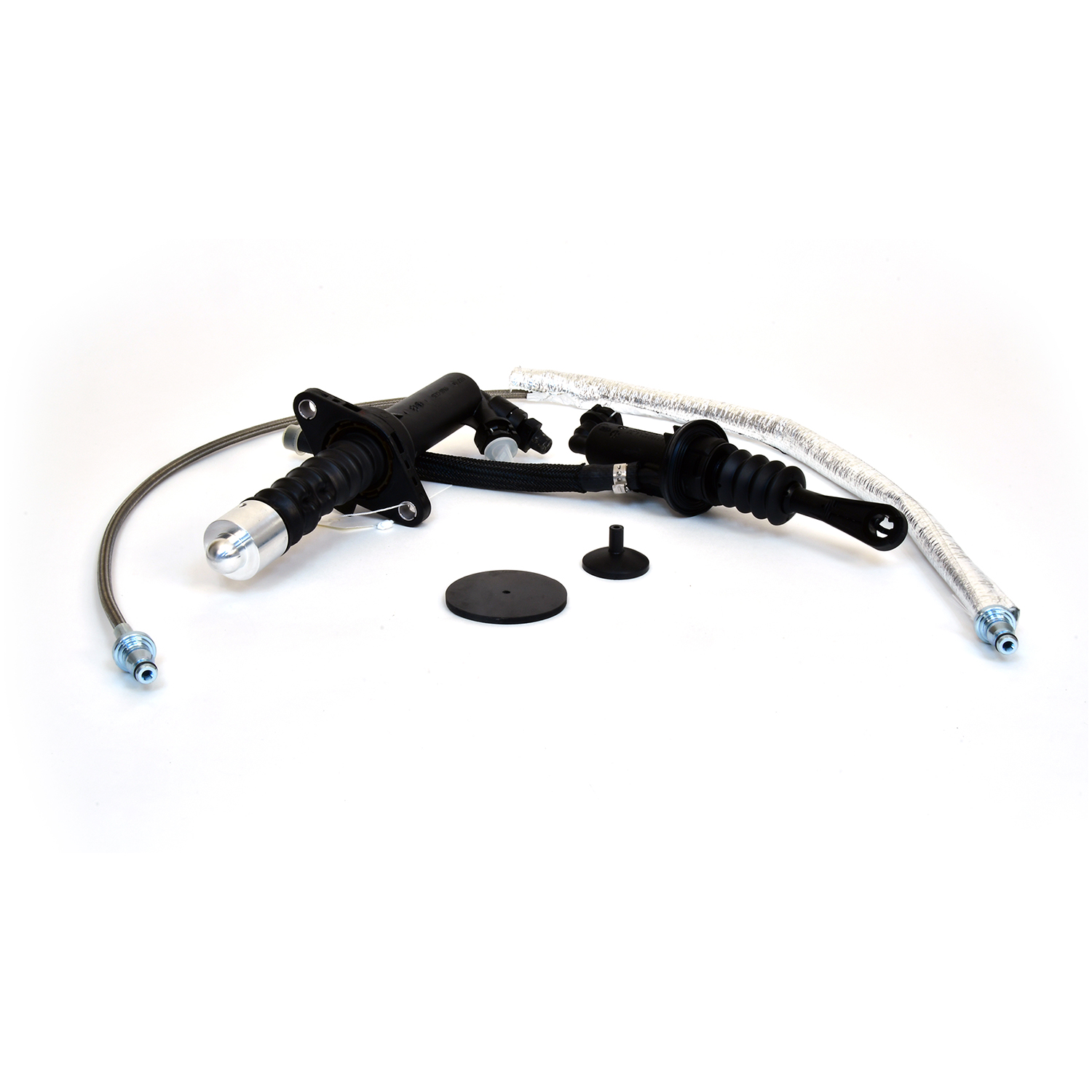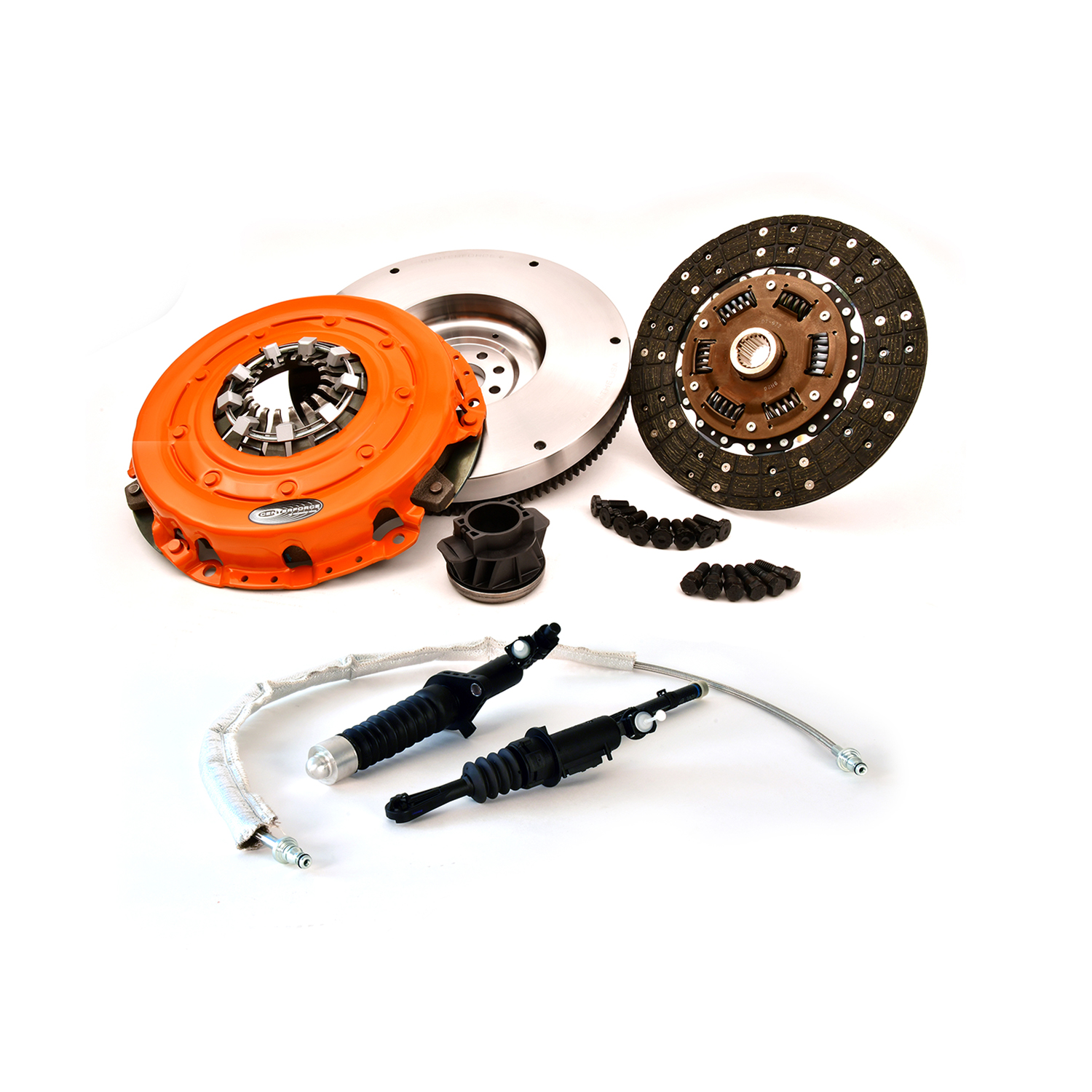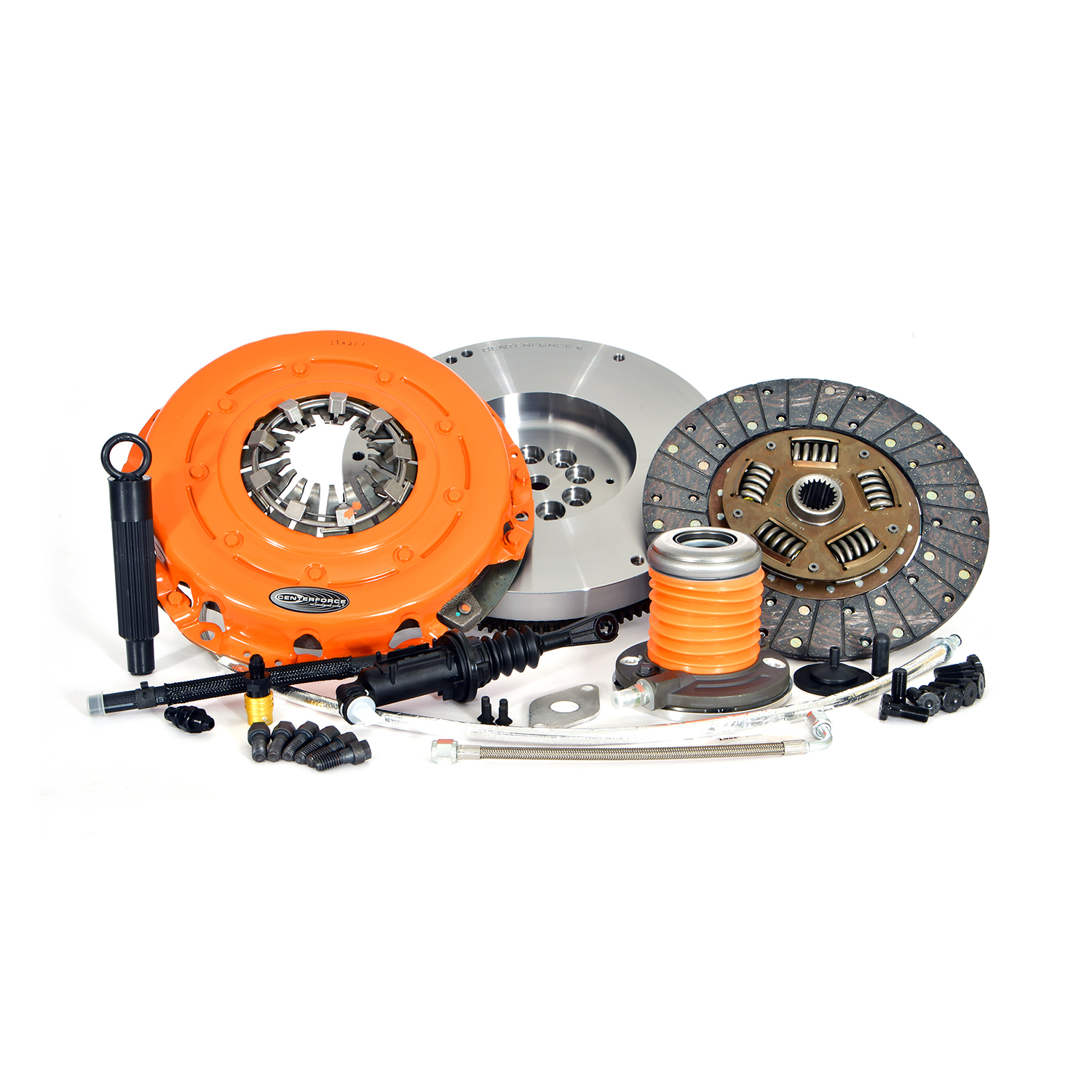Jeep Wrangler JL / Gladiator JT Clutch Hydraulics Options Explained
Jeep Wrangler JL / Gladiator JT Clutch Hydraulic Options Explained
Owners of manual-equipped 2018 and Newer Jeep Wrangler JLs and 2020 and Newer Jeep Gladiator JTs are probably already aware of the failure-prone factory clutch design. The (often catastrophic) failures are well documented on the internet and are not really the focus of this post, but it’s well known that Centerforce has developed a comprehensive solution to the deeply flawed factory design with a number of new clutch kits featuring our Centerforce II and Dual Friction clutch technology. Those that have done some research on aftermarket clutch options may have noticed one thing that sets Centerforce apart is the inclusion of a complete clutch hydraulics package in addition to the clutch itself. Further, Centerforce recently released a second clutch hydraulics option for the JL and JT. At first glance these hydraulics options might seem a bit confusing, so let’s take a closer look at what the differences between the two options are and why one or the other may be a better choice depending on your personal preferences.
What’s With the Replacement Hydraulics, Anyway?

One of the most common questions we receive is why do our kits include replacement hydraulics in the first place? After all, the JL / JT clutch failures are known to be the mechanical parts of the system and not related to hydraulics. This is true, BUT, when Centerforce set out to solve the late-model Jeep clutch problem, we wanted to solve ALL of the problems related to the factory design. In addition to the mechanical shortcomings, it’s well known that the Jeep JLs and JTs have a distinct lack of clutch pedal “feel.” What do we mean by that? Veteran stick shift drivers know that each manual-equipped vehicle has a distinct feel to the clutch pedal; not only where in the pedal’s travel that the clutch begins to engage, but also how quickly the clutch fully engages in the pedal’s travel cycle (among other things). Pedal feel is one of the things that make manual-equipped vehicles unique and a pleasure for many to drive. The factory hydraulics package on the JL and JT leaves a very isolated pedal feeling; it’s almost like the pedal isn’t connected to anything at all. There’s almost no feedback through the pedal for a driver to sense, resulting in a very ho-hum driving experience. Even if we fixed the mechanical shortcomings of the factory design with high-quality components that significantly improved strength and longevity, the stock hydraulics still didn’t deliver the traditional pedal feel that manual enthusiasts desire. Therefore, the total fix for the JL and JT includes not just the mechanical portions of the clutch itself, but the mechanical stuff AND new hydraulics that help restore that traditional clutch pedal feel.

In the pursuit of developing a Jeep Wrangler JL / Gladiator JT clutch package that not only works great but also feels great, Centerforce developed two different clutch packages. Now that we’ve covered the “why” portion of the hydraulics question, let’s take a closer look at these two Centerforce hydraulics options.
The External Hydraulics Option
Centerforce part numbers KCFT157077 and KDF157077 are complete clutch packages that include the traditional external clutch hydraulics option. These kits include everything needed to completely address the failure-prone factory design, including a new billet steel high inertia flywheel, Centerforce II or Dual Friction clutch and pressure plate, throwout bearing, bolts, an alignment tool, a new clutch master cylinder, external slave cylinder, and braided steel hydraulic clutch line.

In factory form, the clutch is actuated via an externally mounted hydraulic clutch slave cylinder. This slave cylinder actuates a clutch fork positioned inside the bellhousing. This fork pivots on a ball and holds a throwout bearing, which in turn pushes on the fingers of the pressure plate to engage / disengage the clutch. Though it sounds a bit complicated, it’s a proven design that has been in use for decades. And the Centerforce external hydraulics option retains this factory design. We simply replace the factory clutch master and slave cylinder with components that vastly improve pedal feel.
The advantages of the external hydraulics option are the retention of the factory design and service parts, and also that the hydraulics remain outside the bellhousing. Because the slave cylinder is mounted outside the bellhousing, it remains easily accessible and easy to replace in the somewhat unlikely event of a failure. This easy serviceability is important to some Jeep owners, making the external option a better choice for those that prioritize easy access to the hydraulic portion of the clutch. The external hydraulic clutch kit is also available as a stand-alone package with part number 601819.
The Internal Hydraulics Option
Centerforce part numbers KCFT770751 and part number KDF770751 are complete clutch kits that include our internal hydraulics package. These kits include a one-piece billet steel high inertia flywheel, a Centerforce II or Dual Friction clutch disc and pressure plate, bolts, alignment tool, a new master cylinder, braided steel hydraulic line with a dry quick-disconnect fitting, and a hydraulic throwout bearing. With this option, the clutch fork, pivot ball, and throwout bearing are replaced by a hydraulic throwout bearing positioned inside the bellhousing. This hydraulic bearing acts as both the throwout bearing and the slave cylinder all in one compact unit.

The advantages to this design include replacing a number of wear-prone parts that can loosen up and start making noise with age and use. The fork pivot is known to wear and become the source of rattles, while the factory throwout bearing has a plastic housing that can similarly wear and become the source of noise. The internal hydraulic bearing simplifies the overall release mechanism because the number of moving parts is reduced, and it also offers even better pedal feedback and overall pedal feel compared to the external option. Installation of the hydraulic bearing is fairly simple during a clutch replacement, and the bearing itself is a proven part used in several OE applications over millions of miles. With the internal option, a hydraulic line passes through the bellhousing between the clutch master cylinder and hydraulic bearing. The one potential disadvantage to this design for some is serviceability; because the hydraulic bearing is inside the bellhousing, replacing the bearing in the unlikely event of a failure involves separating the transmission from the engine to access it. Still, the improved pedal feel and overall simplicity of the design outweigh the potential service disadvantage for some people.
It's worth noting that the internal hydraulics for the JL are modeled after the very successful system Centerforce developed for the previous generation JK Wrangler. These vehicles were also plagued with wear-prone components that tended to develop rattles and make noise, and many JK owners have been able to eliminate these unpleasant noises with our JK internal hydraulic conversion. The JL internal hydraulics package is also available as a stand-alone system with part number 601818.
In Conclusion
At the end of the day, both Centerforce hydraulic options are a good choice and it’s hard to go wrong with either of them. Both of them greatly improve clutch pedal feel and provide a more traditional engagement feel that stick-shift owners crave. If ease of service and retaining the factory design is a priority to you, then the external option is the better choice. If ultimate pedal feel and the simplification of the clutch actuation mechanism while eliminating some wear-prone components is more important, then the internal option is the better choice. Regardless of which you choose, Centerforce provides the ultimate fix for all manual-equipped Jeep Wrangler JLs and Gladiator JTs.

